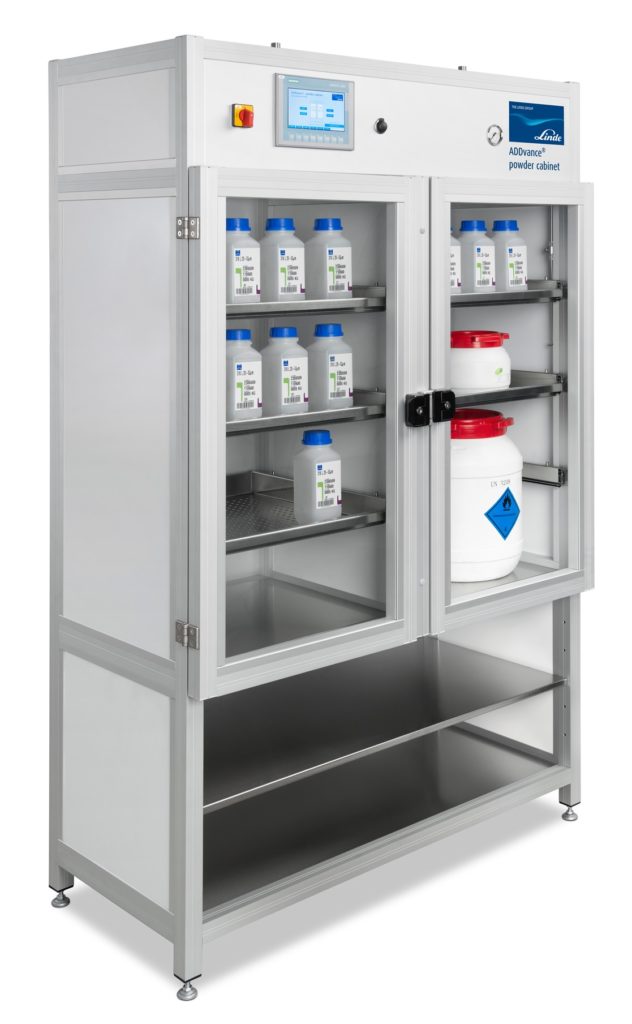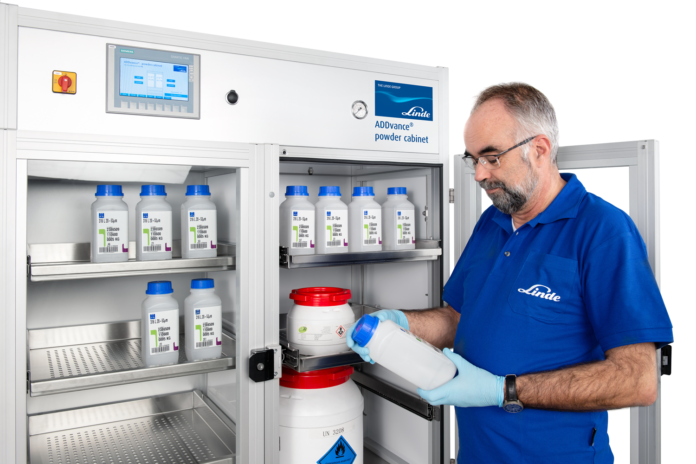Additive manufacturing has been addressed through a wide range of topics but an area that is often left apart is the role of atmospheric gases for its various technologies.
In an industry that offers a wide range of additive manufacturing technologies to meet a wide range of production requirements, the use of atmospheric gases remains a constant need alongside the willingness to optimise both the process and end-product.
Among the atmospheric gases that are available on the market, inert gases such as argon or nitrogen are the most often exploited in metal additive manufacturing processes and in peripheral AM processes such as pre- and post-production operations.
How are they used in AM processes?
The impact of gases can be studied in various AM processes: laser powder-bed fusion, Laser Directed Energy Deposition, Selective laser sintering, gas-metal arc welding (MIG/MAG) and plasma welding techniques.
In the laser powder-bed fusion technology, argon gas enables an ideal environment for the manufacturing. Indeed, in metal additive manufacturing processes, it is not easy to control the environment and to minimize the introduction of potential impurities. Furthermore, inerting is critical for proper management of the combustible dust arising from the powder metal and printing process. On the other hand, a constant gas flow above the powder bed facilitates the removal of projections and fumes generated at the meltpool otherwise, the contact between the laser and the fumes would create defects in the materials once projections would occur.
According to a research carried out by Linde, a specialist of gases, for these reasons, “inert gases are introduced into the sealed printing chamber to create a highly controlled atmosphere, but there are other atmospheric gases used in a variety of applications vital to the AM process.”
Argon is also exploited for the laser Directed Energy Deposition (L-DED) process. In this case, a carrier gas contains the powder which is guided towards the substrate through a nozzle concentric with the laser beam. Another option would be to feed the wire from the side.
“The powder or wire is thereafter melted to form a deposit that is bonded to the substrate and grown layer by layer. An additional gas jet – comprising of argon or tailored gas mixtures – which is concentric with the laser beam, provides additional shielding or process gas protection.”
As for the SLS process, the carbon dioxide aka CO₂ laser sinters the powder in nitrogen. As mentioned earlier, the latter is an inert gas atmosphere; it prevents the heated powder from reacting with ambient air by protecting it.
Lastly, gas-metal arc welding (MIG/MAG) and plasma welding techniques enable the melting of metal filler to form a 3D component layer by layer. Shielding gases such as argon, helium and gas mixtures are compatible with this process. They “protect the hot substrate against the ambient atmosphere and adjust the metallurgical properties of the component being created. Efficient cooling of the generated component is done via the application of cool gases during the welding process to improve productivity.”
The processes described above demonstrate the inherent presence of gases in manufacturing, especially within the closed chamber often filled with argon and nitrogen. They also outline how much it is crucial to control the environment of fabrication hence the development of adequate technology to fit each process.
Understand the importance of controlling the atmosphere in a production process
Given the potential of additive manufacturing for industries, companies that specialize in gazes really started to dedicate part of their unit to gazes used in AM a few years ago. Linde, for instance, one of these specialists has developed a unique technology to break the barriers raised by atmospheric impurities and enable manufacturers to work in optimal printing conditions. The company has developed an ADDvance® powder cabinet, that aims to retain the quality of the valuable, sensitive metal AM powdersby protecting them from exposure to ambient air and humidity.
According to Linde, “ADDvance® O2 precision – provides continuous analysis of the gas atmosphere, detecting oxygen levels with high precision without cross-sensitivity. Recognising O2 concentrations as low as 10 parts per million (ppm), the unit automatically initiates a purging process to maintain the atmosphere as pure as needed.”
The powder cabinet works with a moisture control and monitoring unit to continuously measure humidity levels, triggering a high-volume purge gas flow as soon as the doors are closed to rapidly remove moisture in the air. It then applies a lower stream of gas to ensure a consistently low level of humidity.
The post-processing stage

Gases surprisingly continue to impact the manufacturing after the production stage. During the post-processing stage, the challenge remains to ensure the mechanical properties of the part hence the need of a heat treatment step to reduce stress.
Hot isostatic pressing (HIP) for instance is an advanced material heat treatment process utilising elevated temperatures in a contained high-pressure atmosphere to eliminate internal porosity and voids within cast metal materials and components. The work-pieces are treated thermally in a vessel under high isostatic pressure with high-purity argon typically used to provide the inert atmosphere necessary to prevent chemical reactions that might adversely affect the materials being treated. The smallest impurity in the argon will at this pressure – easily up to 1,000 bars – create oxidation. This is a key challenge for the gas supply.
Under the high temperature/high pressure HIP process conditions, microporosity and voids are reduced or eliminated by plastic deformation, creep and diffusion bonding, improving mechanical properties and fatigue performance of manufactured parts. The reliability and service life of critical high‑performance components are optimised. Typical HIP applications include gas turbine components, automotive engine parts, turbo charger wheels, aerospace structural parts, medical implants, prosthetics and near net shape components.
During any of the AM processes, blast powder residue or unfused powder can build up on the part being printed. Removing particles from holes and cavities can represent a particular challenge in the case of small, elaborate parts and components with complex geometries, especially as melting metal residue requires potentially damaging high temperatures. Depending on the application in question, a number of different surface finishing treatments can be applied to remove or reduce the surface roughness of AM parts including barrel finishing, abrasive flow machining, plasma polishing, micro machining and electrochemical polishing.
This dossier has first been published in the 2019 February issue of 3D ADEPT Mag.






